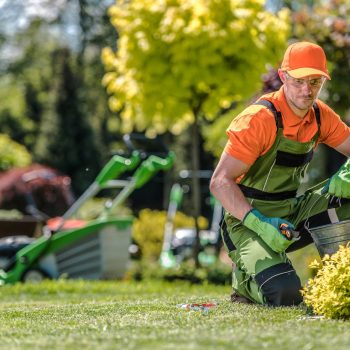Maintaining a beautiful garden requires more than just planting flowers or trimming bushes. Garden maintenance involves consistent care, proper techniques, and a keen understanding of your outdoor space’s unique needs. Whether you’re a seasoned gardener or a beginner, this guide will help you keep your garden thriving year-round.
Understanding Your Garden’s Needs
Before diving into specific maintenance tasks, it’s crucial to understand your garden’s environment. Different plants have varying sunlight, water, and soil requirements, so your first step is to identify the types of plants you have and the best ways to care for them.
- Soil Quality: Healthy soil is the foundation of any thriving garden. Check the pH levels and nutrient content of your soil. If your soil is lacking in nutrients, consider adding organic compost or fertilizer to improve its quality. Mulching is another effective way to retain moisture and add nutrients to the soil.
- Plant Selection: Select plants that are well-suited for your climate and soil type. Native plants often require less maintenance and are more resistant to local pests. If you’re in a hot, arid region, for instance, consider drought-resistant plants like succulents or cacti to reduce the need for frequent watering.
- Watering Routine: Establishing a proper watering routine is essential. Overwatering or underwatering can harm your plants. Most gardens need about an inch of water per week, but this varies depending on the climate and the types of plants you have. Use a rain gauge to monitor how much water your garden is receiving and adjust your watering schedule accordingly.
Essential Garden Maintenance Tasks
Now that you’ve assessed your garden’s unique needs, it’s time to focus on the essential tasks that will keep it healthy and vibrant.
- Weeding: Weeds are your garden’s worst enemy. They compete with your plants for nutrients, water, and sunlight. Regularly inspect your garden and remove weeds by hand or with a hoe. Mulching can also help prevent weeds from growing by blocking sunlight and suffocating weed seeds.
- Pruning: Pruning is critical for encouraging healthy growth and maintaining the shape of your plants. Regularly trim dead or damaged branches to allow for better airflow and prevent the spread of diseases. For flowering plants, deadheading (removing spent flowers) encourages new blooms.
- Fertilizing: Fertilizing provides your plants with essential nutrients for growth. Organic fertilizers like compost, bone meal, or fish emulsion are excellent choices. Be sure to follow the recommended application rates and timing, as over-fertilizing can damage your plants.
- Pest Control: Pests can wreak havoc on a garden if not managed properly. Integrated Pest Management (IPM) is an eco-friendly approach to controlling pests by using a combination of biological, cultural, and chemical methods. Introduce beneficial insects like ladybugs to control harmful pests naturally, or use organic insecticidal soaps if necessary.
- Lawn Care: If your garden includes a lawn, it requires its own set of maintenance tasks. Mow regularly, but avoid cutting the grass too short, as this can stress the roots. Aerating the lawn once a year improves soil health and allows nutrients to reach the roots more effectively.
Seasonal Garden Maintenance
Garden maintenance is a year-round job, and each season brings its own set of challenges. Here’s a quick guide to what you should be doing for your garden in each season:
- Spring: This is the time to prepare your garden for the growing season. Start by cleaning up debris, weeding, and fertilizing the soil. Prune any dead or damaged branches and plant new seedlings. Spring is also the perfect time to divide perennials and plant cool-season crops like lettuce and spinach.
- Summer: Summer heat can stress plants, so focus on watering and mulching to retain soil moisture. Keep an eye out for pests, as they tend to be more active during this season. Deadhead flowers to promote new blooms and trim back overgrown plants.
- Fall: In the fall, your garden prepares to go dormant. This is the time to clean up fallen leaves, remove dead plants, and add compost or organic matter to the soil. Prune your shrubs and trees before winter and plant bulbs for spring flowers.
- Winter: Although winter is a quieter time in the garden, it’s still important to protect your plants. Cover tender plants with mulch to insulate them from frost. Water your plants occasionally if the soil isn’t frozen, and keep an eye on any garden structures or irrigation systems to ensure they’re in good condition for the next growing season.
Common Garden Maintenance Challenges
Even with the best care, you may face some challenges in maintaining your garden. Here are some common issues and how to address them:
- Overgrowth: Fast-growing plants can quickly take over a garden if not properly managed. Regular pruning and cutting back can keep aggressive plants in check.
- Soil Erosion: Heavy rains can cause soil erosion, which washes away nutrients. Installing barriers like retaining walls or using ground cover plants can help prevent this.
- Pests and Diseases: Even with good practices, pests and diseases can occasionally infiltrate your garden. Stay vigilant by regularly inspecting your plants for signs of infestation, and use natural remedies whenever possible to minimize chemical use.
Final Thoughts on Garden Maintenance
Maintaining a garden takes dedication, but the rewards are worth the effort. A well-maintained garden provides beauty, relaxation, and even fresh produce if you grow edible plants. By following these maintenance tips, you can ensure your outdoor space remains healthy and vibrant throughout the year.
With the right care, your garden will not only survive but thrive, providing a peaceful and inviting environment for years to come. Whether you’re caring for a small urban garden or a sprawling backyard, proper garden maintenance is key to keeping your outdoor space looking its best.






